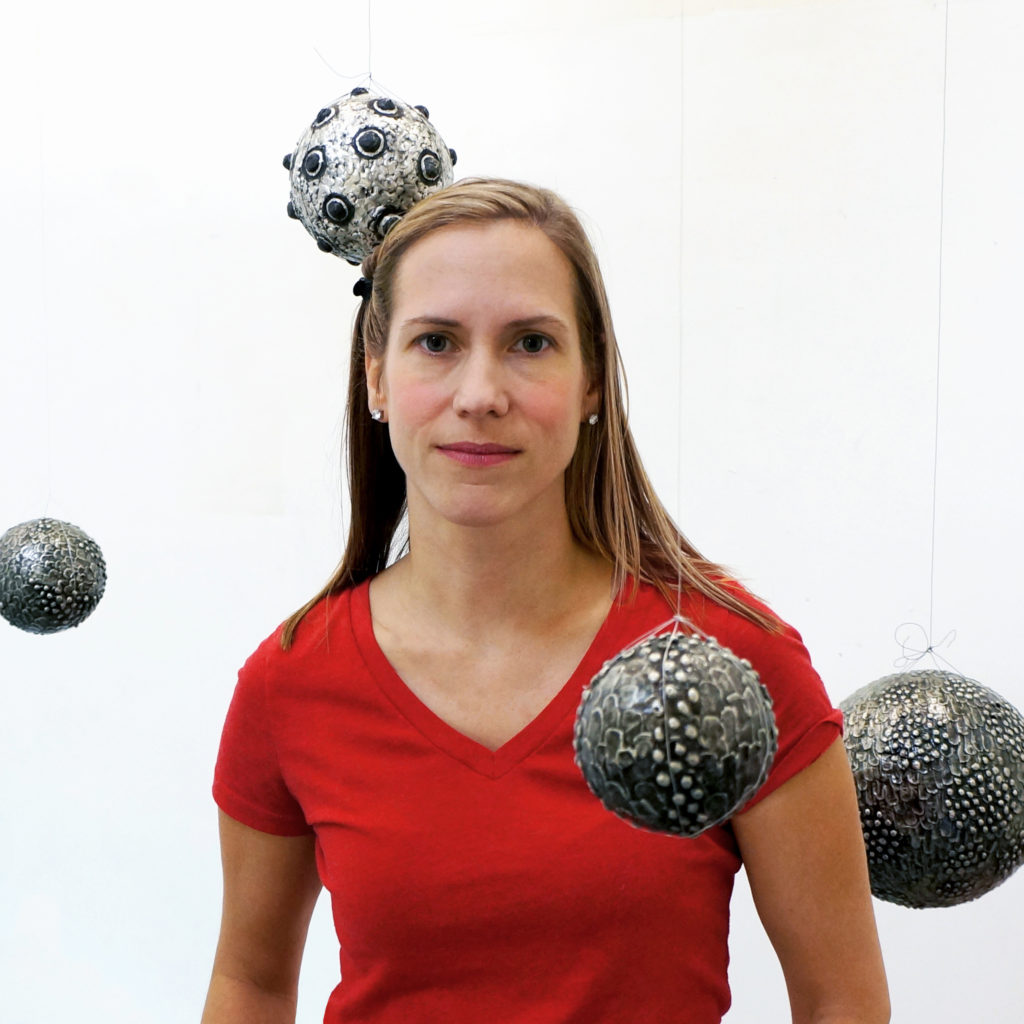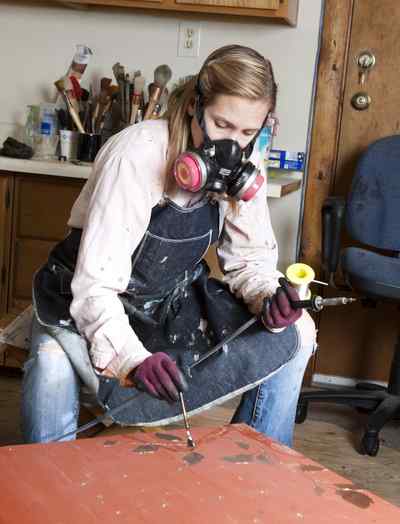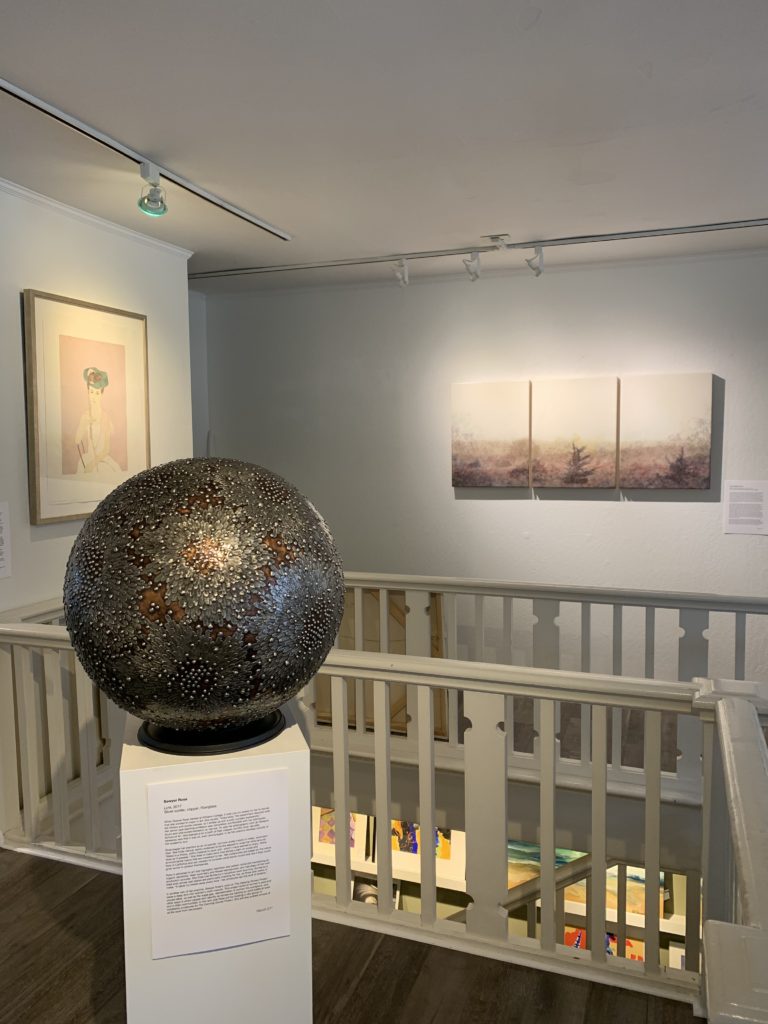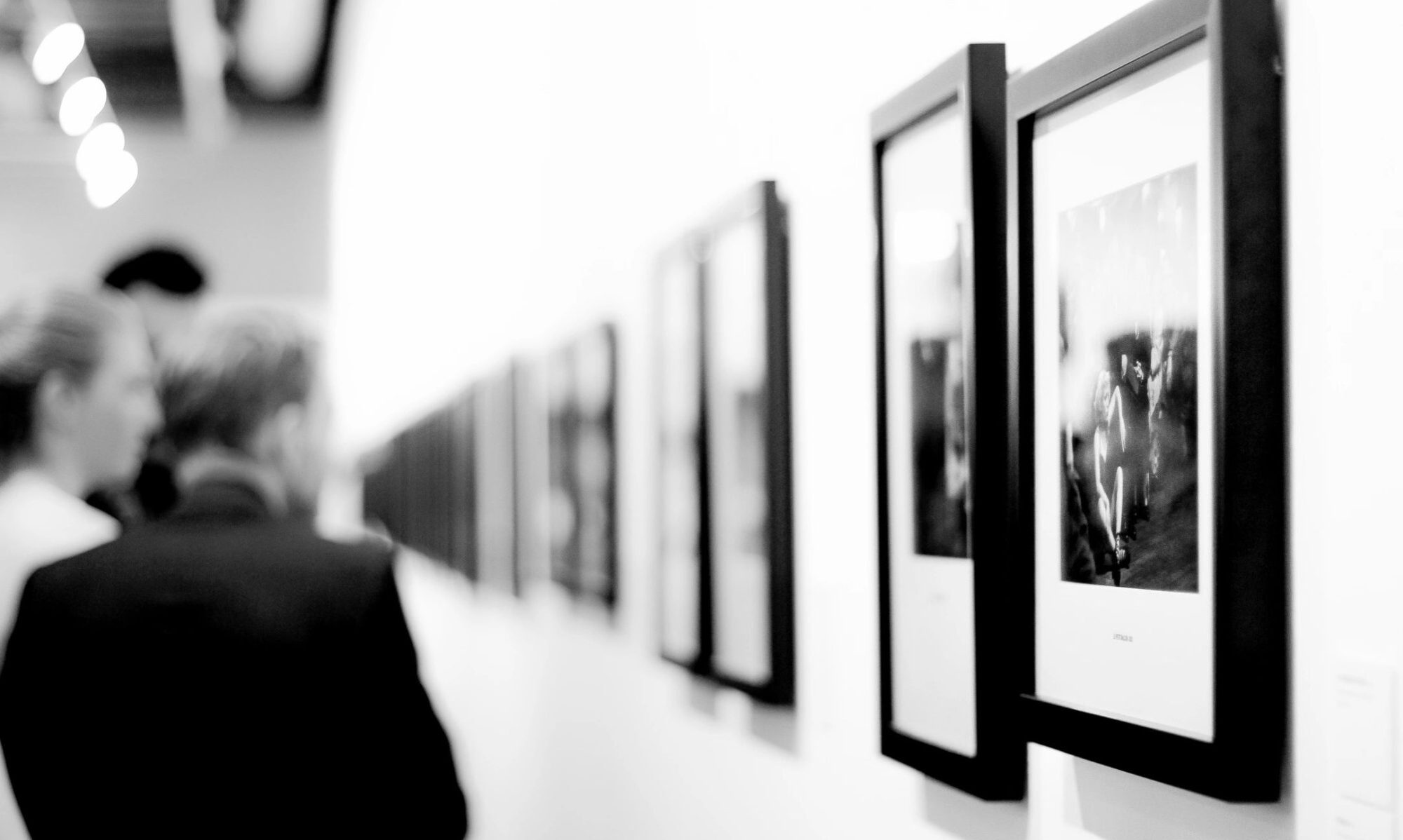31 Women – March 21st: Sawyer Rose

Lyra, 2017
Silver solder, copper, fiberglass
18 x 18 x 18 inches
An Interview with Sawyer Rose

MKM: Tell me about your childhood, where did you grow up? Were you always creative?
SR: I grew up in Charlotte, NC, middle kid of three. My mom had all of us in art lessons from a young age. It was just at the nice lady’s house a few streets over, but as the creative kid of the family, I ate it up. At home I had three or four unfinished craft projects lying around the house at all times.
MKM: Why did you pursue art and where did you study?
SR: I went to Williams College which has a wonderful Art department. It took maybe 6 weeks of my first year to decide that I wanted Art to be my major. Fortunately, the department required both Art History and studio classes, so I ended up with a well-rounded experience.
MKM: Did you have any memorable teachers at Williams College?
SR: My senior year painting professor was completely comfortable with my odd studio hours and wild experimentation on canvas. So was my photography tutor at Glasgow School of Art. I learned loads in both of their classes, but the most valuable takeaway was that it was ok, even encouraged, to let my practice develop outside of the academic box.
MKM: When you’re creating what’s your daily routine? Rituals, patterns?
SR: Daily routine? No. All work patterns conform to the elementary and middle school calendars.

MKM: How has your practice changed over time?
SR: I began my practice as an oil painter, but I kept wanting to add a third dimension to my 2-D works. After many years I decided to try my hand at true 3-D sculpture and found it suited me much better. It’s only in the past year that I have started making 2-D works again, but now I make them by choice rather than by default.
MKM: Do you focus on a specific medium or combination of mediums? Which creative medium would you love to pursue but haven’t yet?
SR: I work in metal, wood, and fiber mostly. I find natural, earthy materials to be the easiest for me to wrap my mind around. Metal is a finicky, willful material to work with, which I have learned to enjoy. Metal does as it pleases.
MKM: What themes do you pursue?
SR: I like to make work that shines a light on social and environmental topics that are important to me. My metalworks are based on the native flora of California and ask viewers to consider what plants would look like if they could grow armor to protect themselves. In another vein, my work on The Carrying Stones Project takes a deep dive into women’s work inequity. I look at women’s paid and unpaid labor, but also at the wage gap, representation of women the workplace, and other ways in which people who identify as female are fighting an uphill battle at work and in their communities.

MKM: What is your most important tool? Is there something you can’t live without in your studio?
SR: Does whiskey count? (Kidding!!) I love my belt sander. It’s powerful and versatile and can solve a lot of sculpture problems quickly.
MKM: Is there an artwork you are most proud of? Why?
SR: I’m most proud, seemingly counterintuitively, of the pieces I make that don’t feel like they came out of me. It’s a thrilling way to get a glimpse of what my subconscious might look like.
MKM: What art do you most identify with?
SR: I’m attracted to art that highlights repetition and pattern while still maintaining an organic sensibility. Near-symmetry and flawed reproduction are mainstays of my production process.

MKM: Do you have a sense of connection to a particular woman artist from art history?
SR: Lee Bontecou’s sculpture work is stunning. It takes my breath away every time.
MKM: Is there a specific work from Lee Bontecou that you find interesting?
SR: Bontecou’s steel and canvas wall pieces are particularly inspiring for me, as I also work in metal. Her armatures are the stuff of dreams.
MKM: What’s the best piece of advice you’ve been given?
SR: “Never assume anyone else’s motivations are the same as your own.” My high school Spanish teacher told me this, apropos of what I can’t remember. When I’m trying to decide how to best educate my audience about a particular topic, I try to remember that every viewer comes with their own history, their own learning, and their own prejudices. I want people to feel comfortable starting their learning from where they are right now.
MKM: What can we expect from you in the next year?
SR: In the next year I will be building a new group of installation sculptures for The Carrying Stones Project that tell the stories of some truly fascinating working women. Eventually, I’m going to publish a book of all the work from the project.

